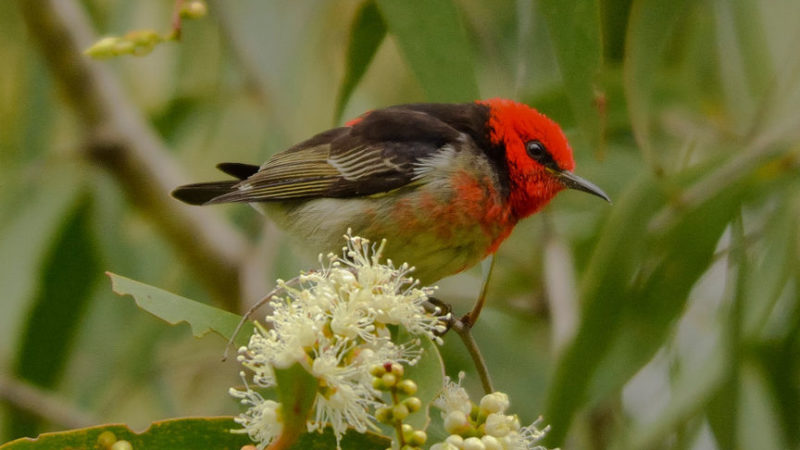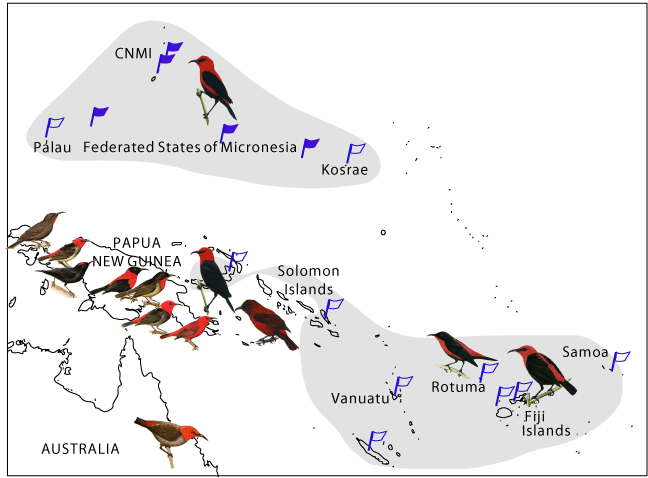Breeding characteristics of the Akohekohe on east Maui
Published Work | 2001 | Studies in Avian Biology 22, 194–201
permalink
Research Project | 2016
Ever since Darwin’s “The Origin of Species,” biologists have been studying the causes of diversification and speciation. Speciation may be driven by sexual or ecological selection or random drift, and the geographic constellation may vary from sympatry (no geographic isolation) to complete allopatry (geographically isolated by means of any barrier, such as water, mountains, or other unsuitable habitat). Due to the historic emphasis of scientific effort on sympatric speciation, we know relatively little about allopatric speciation, the most common form. The main theory has long been that diversification in allopatry is driven by random processes. However, some compelling studies have shown that selective processes based on habitat differences may play an important role. It has also been suggested that speciation through drift is much less common than previously thought. Sexual selection is very important in sympatry, but little is known about its role in allopatry. To shed light on this, we are studying diversification in a group of Pacific songbirds, the honeyeaters, that exhibit variation in the two cues used in mate attraction, plumage color and song.
We are using a combination of extensive fieldwork on Pacific islands and molecular lab work at the Center for Tropical Research (CTR). We capture honeyeaters throughout their range, take DNA samples, and measure plumage and morphological characteristics, after which they are released unharmed. In addition, we record songs of males that are displaying to attract females. Like human language, bird song consists of various elements that can be arranged in different orders to make up a song. These sounds are visualized by means of sonograms, and time and frequency parameters are measured. Both plumage color and song are presumably under selection. In contrast, neutral genetic markers, which do not code for any traits, evolve through random processes. We are able to assess whether the sexual signals are evolving faster than neutral genetic markers, which would imply a role for sexual selection. By relating remotely sensed climatic and environmental factors to divergence in sexual traits, we can also investigate the influence of different habitats on speciation. In a second stage of this study, we will go back to several divergent populations to test whether females prefer local males to foreign ones, which should be the case if sexual selection causes a reproductive barrier. If so, these populations are not only divergent, but new species are possibly evolving.

Fig. 1. Myzomela honeyeater of Saipan (Northern Mariana Islands).

Fig. 2. Map showing the Myzomela honeyeater distribution in the Pacific. Solid flags indicate populations that have been sampled for song, plumage coloration, and DNA so far.
Related Publications
Published Work | 2001 | Studies in Avian Biology 22, 194–201
permalink